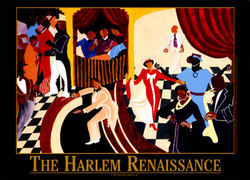Harlem Renaissance
The Unforgettable Era of the Harlem Renaissance
By: Emma and Kaitlyn
The Importance of the Harlem Renaissance
The Harlem Renaissance was originally called the New Negro Movement and created a new black cultural identity in the 1920s to 1930s. The African Americans of Harlem, New York hit a peak in cultural expression such as art, literature music and dance. It took place just after World War I and the great depression was partly responsible for the end of it.
The Harlem Renaissance holds great importance because of the remarkable expression the African Americans had and for the first time the white Americans took notice of the talents the African Americans had. For the first time, white owned publishing houses published books by black authors and some white Americans helped to promote the literary works of African Americans to the white communities.
The Harlem Renaissance holds immense credibility for initiating magnificent cultural creativity and will continue to do so. Even today, people from all around appreciate the artwork, artists, musicians, jazz, quotes and many more from this time: the unforgettable time of the Harlem Renaissance.
The Harlem Renaissance holds great importance because of the remarkable expression the African Americans had and for the first time the white Americans took notice of the talents the African Americans had. For the first time, white owned publishing houses published books by black authors and some white Americans helped to promote the literary works of African Americans to the white communities.
The Harlem Renaissance holds immense credibility for initiating magnificent cultural creativity and will continue to do so. Even today, people from all around appreciate the artwork, artists, musicians, jazz, quotes and many more from this time: the unforgettable time of the Harlem Renaissance.
Art of the Harlem Renaissance
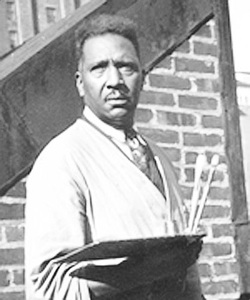
Palmer Hayden
Palmer Hayden Palmer Hayden was born in WideWater, Virginia to John and Nancy Hedgeman and lived until 1973. He had originally been given the name of Peyton Cole Hedgeman, but Palmer Hayden was the name given by his White commanding sergeant in World War I. Hayden moved to Washington D.C. when he was a teenager to find work and continued to move about the country until he enlisted in the United States Army in 1912. In 1920, he was discharged and moved to New York City in high hopes of becoming a commercial artist; he defines himself as a self-trained artist. He attended Columbia University when he moved to New York and took occasional art lessons. To attain his goal, in 1926, he traveled to Maine to study at the Commonwealth Art Colony. Later that year, Hayden won the first Harmon Foundation gold medal award for his painting of a Maine water scene.
Palmer Hayden Palmer Hayden was born in WideWater, Virginia to John and Nancy Hedgeman and lived until 1973. He had originally been given the name of Peyton Cole Hedgeman, but Palmer Hayden was the name given by his White commanding sergeant in World War I. Hayden moved to Washington D.C. when he was a teenager to find work and continued to move about the country until he enlisted in the United States Army in 1912. In 1920, he was discharged and moved to New York City in high hopes of becoming a commercial artist; he defines himself as a self-trained artist. He attended Columbia University when he moved to New York and took occasional art lessons. To attain his goal, in 1926, he traveled to Maine to study at the Commonwealth Art Colony. Later that year, Hayden won the first Harmon Foundation gold medal award for his painting of a Maine water scene.
Jeunesse by Palmer Hayden
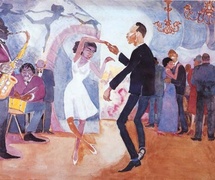
Because of the rich establishment of the artistic, cultural and social expressions from the Harlem Renaissance, Hayden pursued his gift in art and became a famous artist of this time. One of his very famous pieces of artwork was Jeunesse, a watercolor painting.This was influenced by his enjoyment in Jazz. Hayden could have been seen dancing as like this at the Savoy, which was Harlem’s most famous jazz club. Palmer Hayden has created many valuable pieces of artwork that now represents the time of the Harlem Renaissance.
Language and Slang of the Harlem Renaissance
Language during the Harlem Renaissance was prominent because expressing language was a base to why the Harlem Renaissance was so memorable. Slang in the 1920s was expected and used daily. Zora Neale Hurston shows many of the slang words in her creation of a glossary, which you can locate below. Popular slang words of that time consisted of "all wet," which means it was an idea that had no merit. It was also used at a derogatory sense about a person. The use of the word "Flapper" was to refer to the young women in the 1920s who were extremely thin, wore makeup, had short hair, and a style of a knee-length dress with a dropped waist. The slang word, "The Roaring Twenties" was another name for the time of the 1920s. It represented the enjoyement of the rich achievements of art, jazz, dance and more. For more translations in the 1920 slang click here to view Zora Neale Hurston's Glossary of Harlem Slang.
Fashion and Style:
Fashion and Style in the Harlem Renaissance
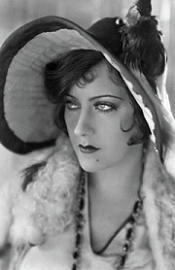
In the time of the Harlem Renaissance they valued casual elegance and classical style. It was a time of prohibition, violence and a time with spirit and creativity. Even today, the fashions from this time has set trends, such as in the Academy Awards when phrases such as, “inspired by the 1920s”. The significance of the fashion of this time is that women got the freedom to choose For the first time. women could choose beauty, individuality or creativity in the way they present themselves through the way they dress.
The time of the Harlem Renaissance awas also called the Flapper Era, in which the style included a fringed flapper dress, and feathered headbands. The mens style had changed too; the men started to part their hair down the middle, slicking back the sides and giving their hair a greasy look. Like today, men wore the traditional suites that men still wear today: looking professional and elegant.
The time of the Harlem Renaissance awas also called the Flapper Era, in which the style included a fringed flapper dress, and feathered headbands. The mens style had changed too; the men started to part their hair down the middle, slicking back the sides and giving their hair a greasy look. Like today, men wore the traditional suites that men still wear today: looking professional and elegant.
Famous Poets of the Harlem Renaissance
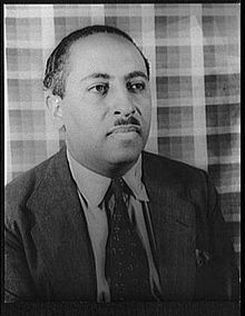
Starting in the 1900s, many middle-class African-Americans moved to the Harlem suburbs in New York city, creating a crucial period in American history when the influence of African-Americans in politics, literature, music, culture and society grew exponentially and soon became part of the commonplace. Many great poets included Langston Hughes, Jessie Fauset, Countee Cullen, Claude McKay, and Arna Bontemps.
Southern Mansion by Arna Bontemps
Poplars are standing there still as death
And ghosts of dead men
Meet their ladies walking
Two by two beneath the shade
And standing on the marble steps.
There is a sound of music echoing
Through the open door
And in the field there is
Another sound tinkling in the cotton:
Chains of bondmen dragging on the ground.
The years go back with an iron clank,
A hand is on the gate,
A dry leaf trembles on the wall.
Ghosts are walking.
They have broken roses down
And poplars stand there still as death.
Southern Mansion by Arna Bontemps
Poplars are standing there still as death
And ghosts of dead men
Meet their ladies walking
Two by two beneath the shade
And standing on the marble steps.
There is a sound of music echoing
Through the open door
And in the field there is
Another sound tinkling in the cotton:
Chains of bondmen dragging on the ground.
The years go back with an iron clank,
A hand is on the gate,
A dry leaf trembles on the wall.
Ghosts are walking.
They have broken roses down
And poplars stand there still as death.
Musicians of the Harlem Renaissance
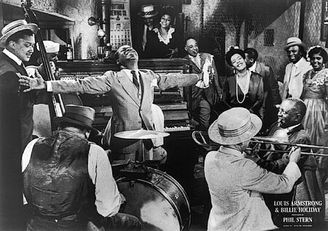
Like snow to Eskimos, no one description of jazz adequately summarizes this diverse music; it represents an assortment of musical ideas and originating influences. There is no way to pinpoint simply when and where it was established, nor settle when the name "jazz" finally won over variants such as "jass" or "jasz". Music of house parties, after work dances, religious song, cries of street vendors, work songs and field hollers, blues, jug bands, and juking are some of the places and art forms formed within African-American communities. Well-known musicians of the era include Red Allen, Louis Armstrong, Buster Bailey, Lawrence Brown, Roy Eldridge, Art Farmer, Jimmy Jones, Mamie Smith, and Lester Young. Mamie Smith's Crazy Blues perfectly describes a typical evening during the Harlem Renaissance.
